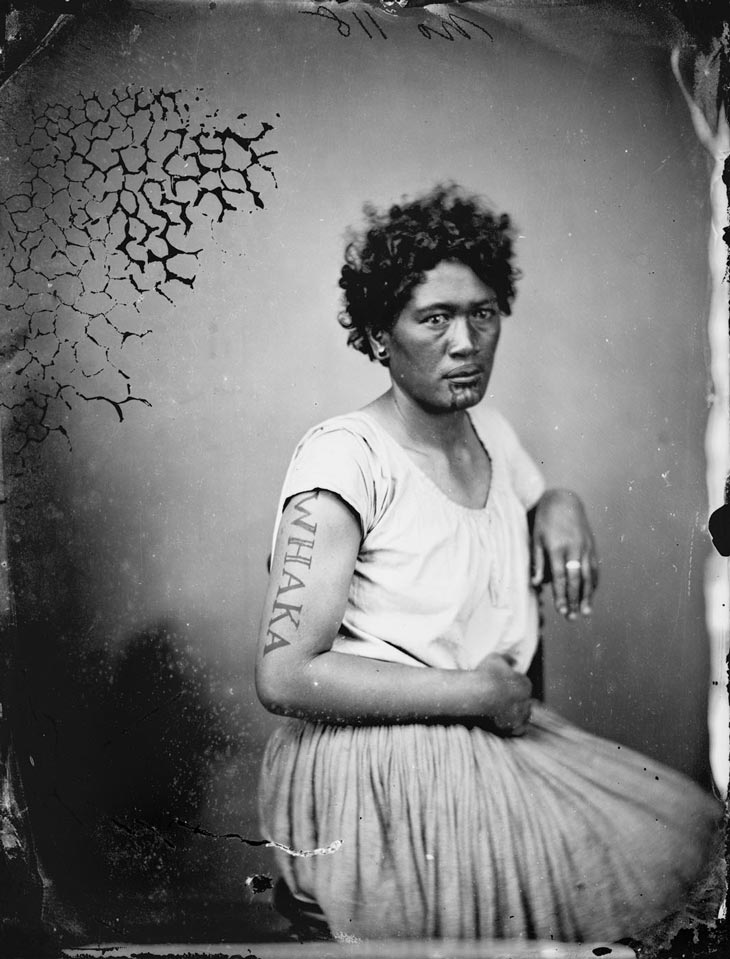 Studio portrait of an unknown Māori woman
Studio portrait of an unknown Māori woman
TLF ID R8521
This is a black-and-white photographic image of an unknown Māori woman. It is a portrait shot, taken in the Auckland studios of the American Photographic Company, about 1865. The woman is seated and wears a European blouse and gathered skirt. One visible earring and a ring on her right hand are also European in style. She has a moko – a design of permanent skin marking – on her lips and chin. The Māori word WHAKA is tattooed in large, capital letters on her upper left arm. Scratched in the top edge is No 118. The photographic quarter plate has been damaged, mainly at the edges and in the plain background.
